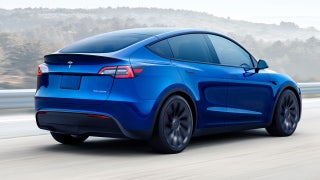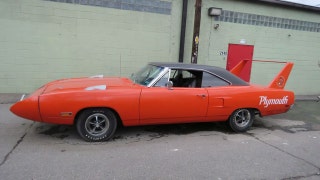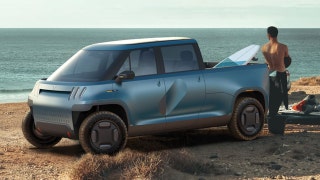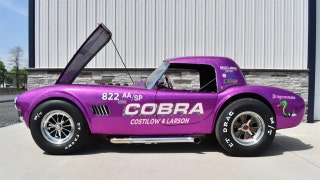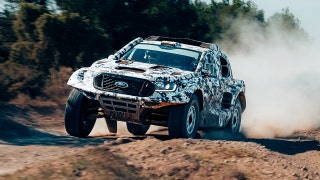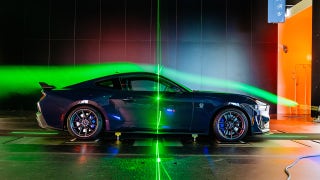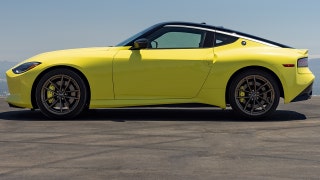The GMC HUMMER EV was a Moon shot
GMC HUMMER EV Chief Engineer Al Oppenheiser joins Gary Gastelu in The Fox Garage to discuss the new all-electric pickup and SUV.
General Motors is going back to the Moon.

General Motors is working with Lockheed Martin to develop a new Lunar Terrain Vehicle. (GM)
The automaker, who helped Boeing develop the Lunar Rover Vehicle (LRV) used by the Apollo program astronauts is collaborating the Lockheed Martin to build a Lunar Terrain Vehicle as part of NASA's Artemis Program, which aims to return humans to the Moon this decade and establish a permanent presence on its surface.
The specific design of the electric vehicle is still in the works, but the companies said that it would be feature autonomous driving tech.
A computer-generated animation that accompanied the announcement depicted AN open-top two-seater loaded with scientific equipment, not unlike the original LRV, while an image shows two of them parked next to a larger enclosed vehicle.
Jeffrey Ryder, GM Defense VP of Growth and Strategy, said several different vehicle types will likely be required to perform a variety of tasks and missions.
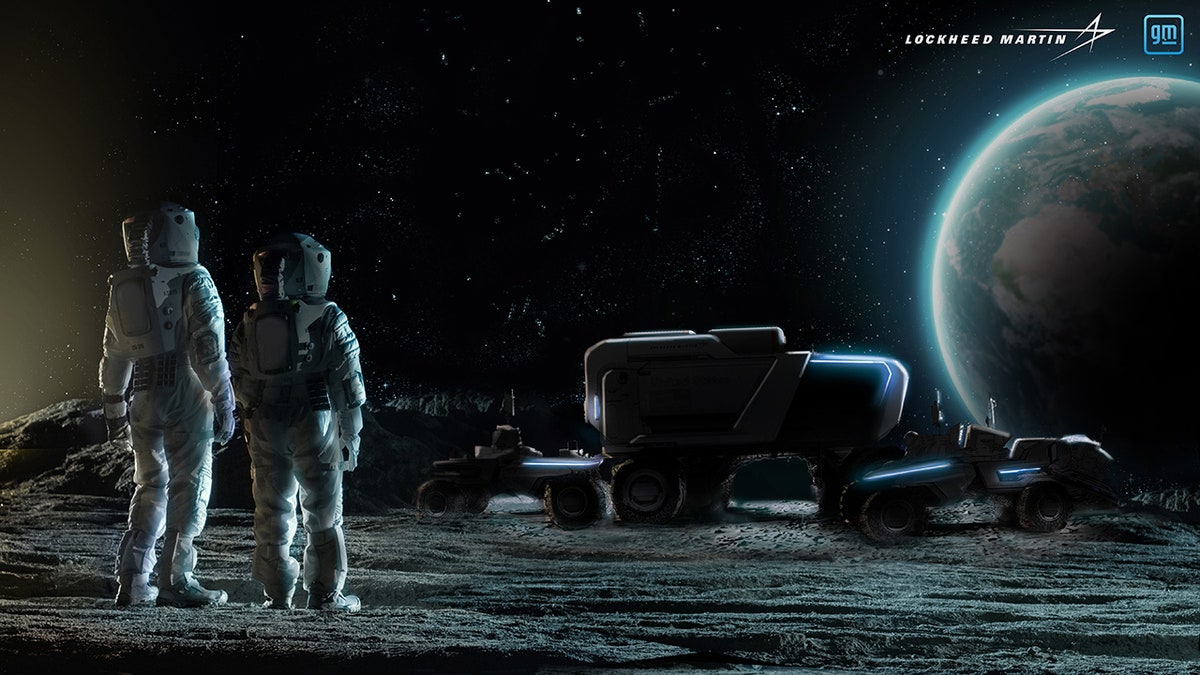
(GM)
The vehicles will allow astronauts to travel farther from their base than the LRV, which was built with a range of 57 miles on its battery pack, but was never driven more than 22.3 miles during an Apollo mission.
The LRV's top speed was technically 8 mph, but Apollo 17 mission commander Capt. Eugene Cernan reached 11.2 mph on a downhill stretch during one drive, which remains the lunar land speed record today. He and Lunar Module Pilot Harrison Schmitt also ventured a record 4.7 miles from their Lunar Module.
OUT OF THIS WORLD: EUGENE CERNAN RECOUNTS HIS RIDE ON THE MOON
GM's upcoming GMC Hummer EV pickup and SUV pay tribute to the automaker's involvement with the Apollo program with several design features that include a map of the Sea of Tranquility and Neil Armstrong's footprint.
A timetable for the LTV program was not announced, but GM and Lockheed Martin said it would be capable of reaching the lunar south pole and covering its rugged terrain.
This story has been updated to correct the roles of the Apollo 17 astronauts
